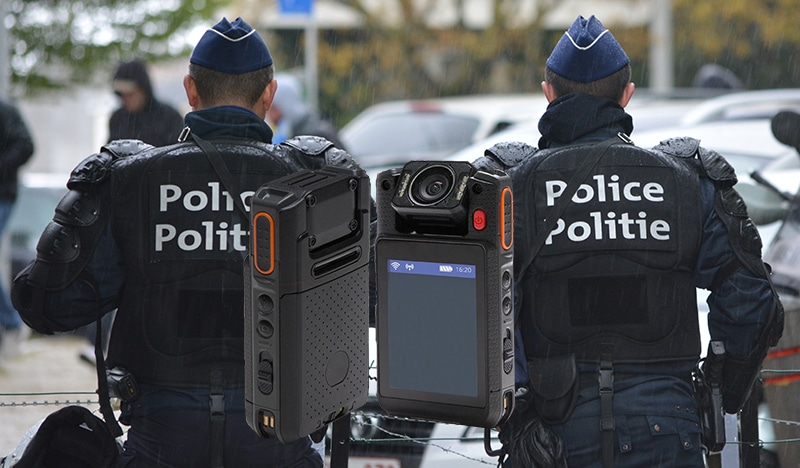In recent years, and given the need to provide law enforcement officers with the most secure and advanced equipment, personal recording systems have gained some popularity, a tool that has proven to be very valuable in recording and storing evidence of the police operation.
This tool may have even greater potential in combination with broadband technologies, with new devices emerging that not only record what is happening, but also send the live video image to the control centre or other terminals.
In such a complex environment as a police operation, and given the growing need to show the reality of the action, the advantages of using this type of device are obvious.
Firstly, they greatly increase security. During their intervention, the agents must remain very attentive to everything that happens around them, however, there may be situations in which they miss some details or, simply, they may need reinforcements in a critical situation. In this case, the control centre can monitor the operation thanks to the received video, giving the officers precise instructions or sending support if necessary.
Furthermore, several studies have shown that the use of this type of device reduces violence. Knowing that they are being filmed encourages good behaviour by officers and citizens, leading to fewer incidents and fewer attacks on officers.
This improved behaviour, together with the fact that all evidence is recorded, also results in fewer complaints and false allegations of misconduct. In other words, not only do they improve the correctness of officers in their operation, but also, because there is a visual and audio record, it is possible to independently verify what happened.
The recordings also provide information that may have gone unnoticed during the police operation, but which can be extremely valuable to the investigative process. Similarly, it can be used as evidence in court and can even be a good learning tool to train officers on how to act in risky situations.
Finally, combined with other technologies, such as facial recognition systems, it can be a valuable tool for locating criminal suspects, but also missing persons or Alzheimer’s patients, for example. In this way, the image captured and sent by the devices is received at the control centre and compared with the profiles stored in a database to identify the person. If there is a positive result, the agent can be alerted after a process that takes just a few seconds, improving the efficiency of the action.
In its eagerness to provide public safety users with the best critical communications tools, Teltronic also incorporates in its portfolio these devides, a solution that integrates body-worn camera, microphone with PTT, GPS and a powerful hardware platform with multiple connectivity such as 4G/LTE or WiFi that will change forever the way in which agents carry out their work.
In this way, they have been designed to capture, store and share video, audio and image evidence, allowing the sending of photographs (which can be captured at different resolutions), video and commands in an agile way, as well as voice communications. These devices also incorporate an emergency button, which automatically starts recording when pressed.
It’s important to highlight that, as is typical in critical communications environments, these personal cameras support encryption of video, audio and photos, so that their content can only be accessed once they have been decrypted.
The solution includes a suite of applications that, running on a PC, enables full device management, automatic import and upload of data to the cloud, and collection, sorting and storage of images.
The process is very simple. By connecting the multi-charger unit to a PC, which can also be used for programming and updating the devices, and through a simple and intuitive graphic interface, the data can be viewed, managed and shared easily and efficiently.
Subsequently, the digital evidence management tool collects and stores the evidence in a secure network, with the capacity to organise large volumes of data, allowing the different records to be labelled to facilitate their location through keywords. For greater security, it is possible to define the permissions granted to different users and it also has a buckup mechanism.
In addition, the cameras can be remotely monitored and controlled from the control centre solution.



